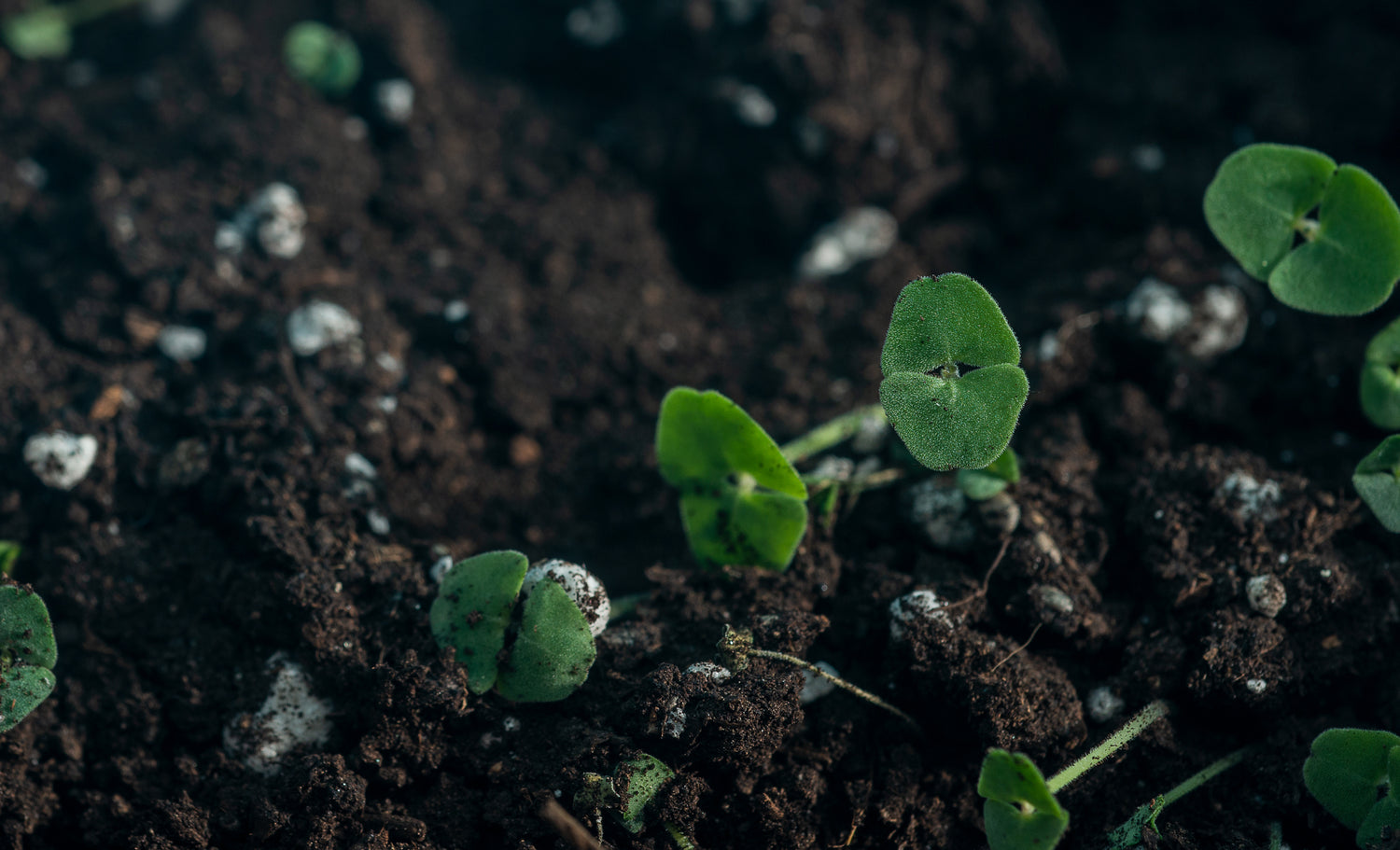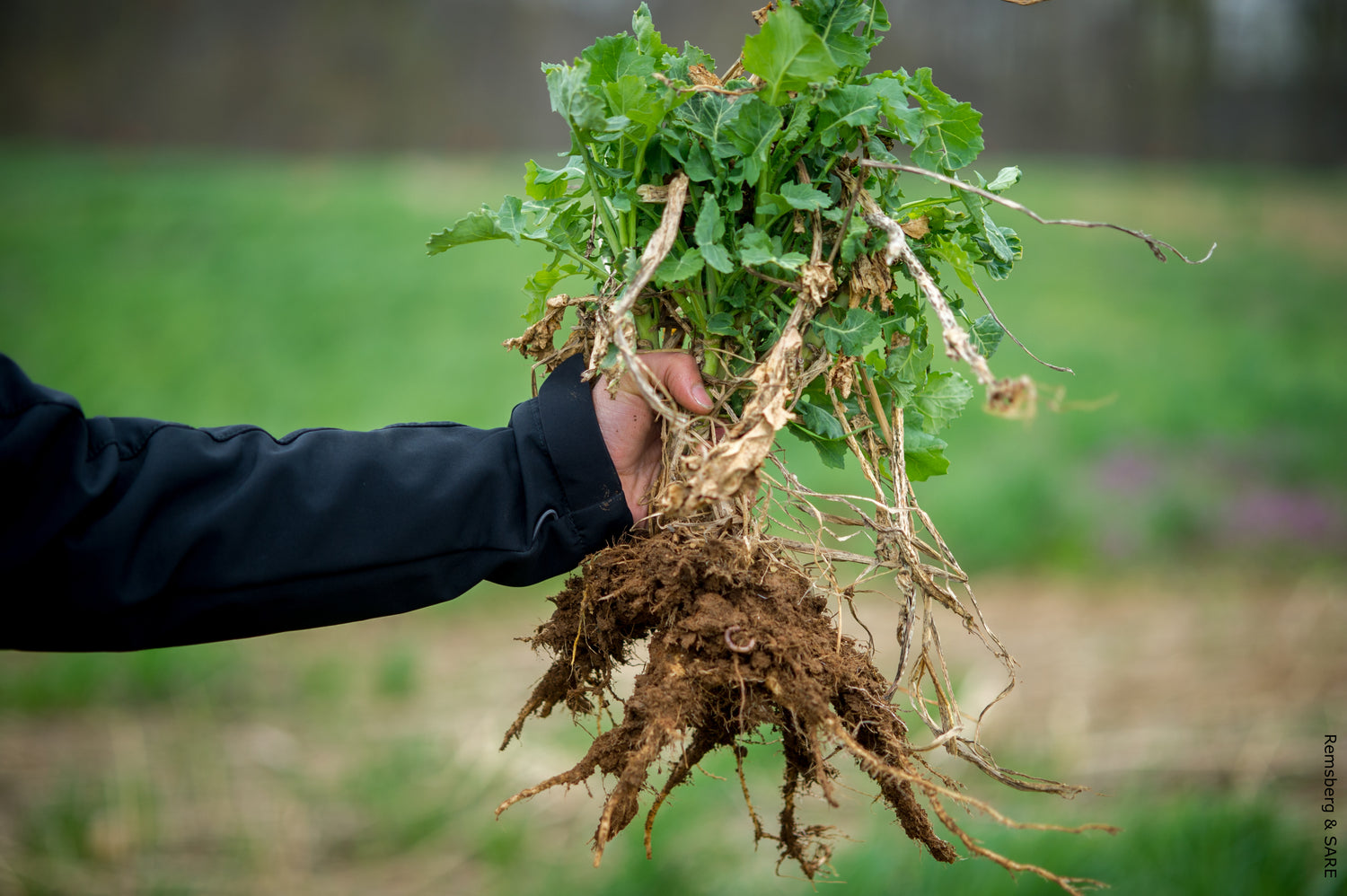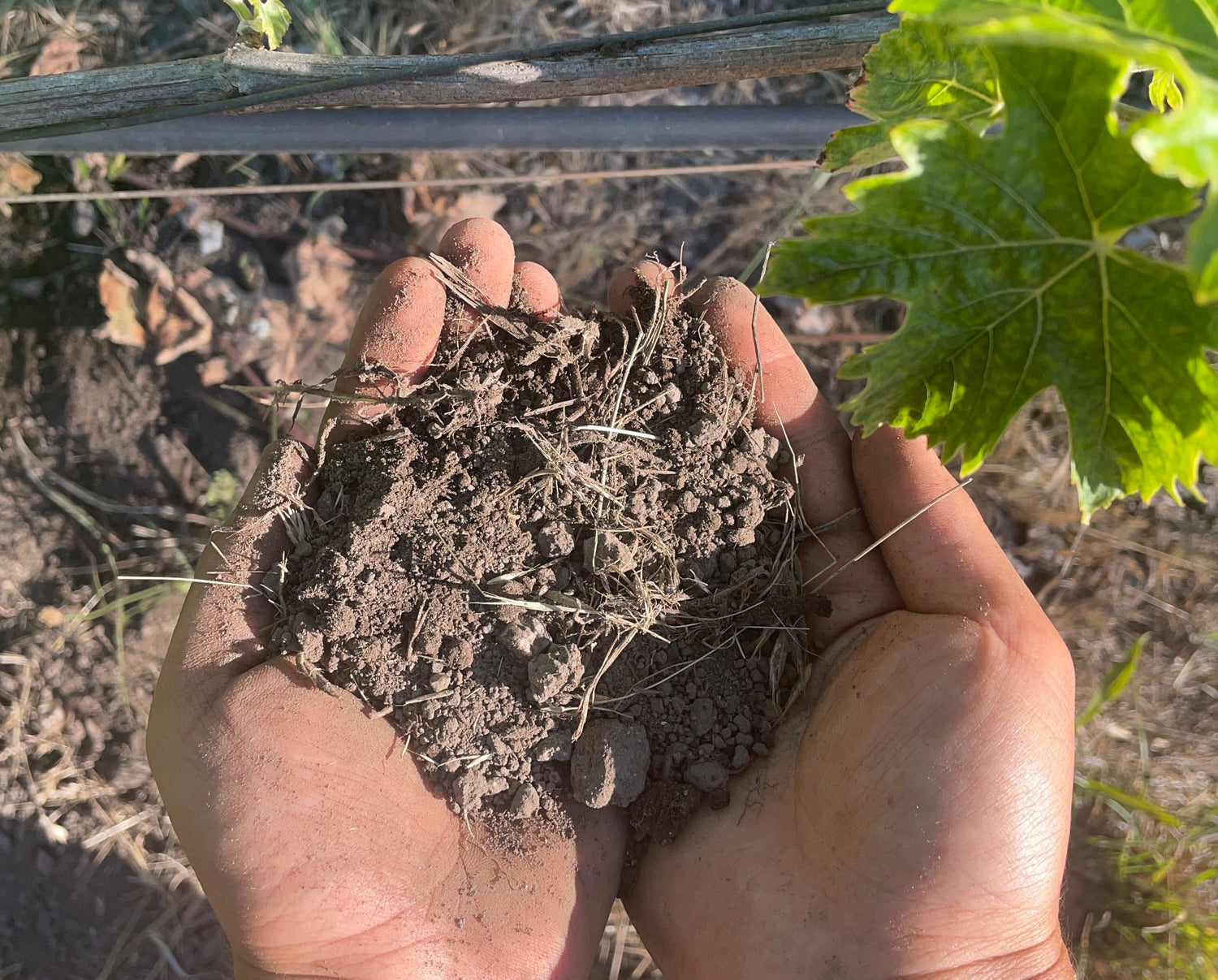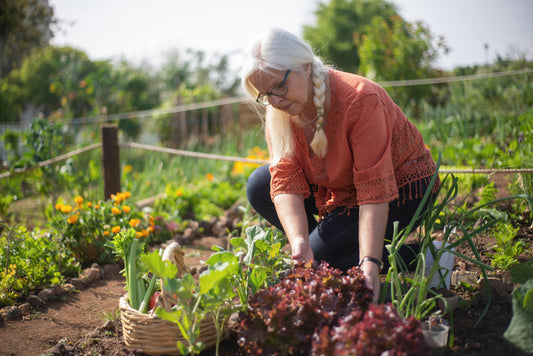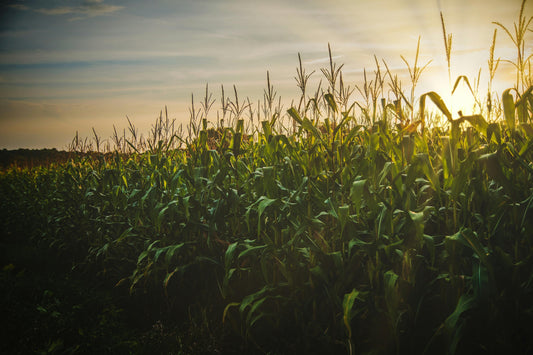California's diverse agricultural landscape encompasses multiple soil orders from the Central Valley's fertile Mollisols to the desert Aridisols, supporting a multi-billion dollar economy while facing significant challenges from salinity, erosion, and climate change documented in extensive peer-reviewed research.
California Agricultural Soils: Comprehensive Research and Economic Impact Analysis 2025
Economic losses from soil degradation reach $3.7 billion annually in California agriculture according to Carnegie Mellon University research, while conservation practices demonstrate 4.4:1 benefit-cost ratios and significant carbon sequestration potential of 0.55-1.15 t C/ha/yr, based on comprehensive peer-reviewed studies from UC Davis, USDA, and multiple journal publications.
Economic Consequences of Soil Degradation
Salinity Impact Research
Research from Carnegie Mellon University quantifies current annual revenue losses at $3.7 billion from salinity alone, representing 10% of central California's agricultural revenue. This study by Welle & Mauter provides comprehensive economic analysis of salinity impacts across the region.
The Water Education Foundation reports that 1.5 million acres out of 7 million irrigated acres have been declared salinity impaired in the Central Valley, with 250,000 acres taken out of production due to salt accumulation. Severe salinity exceeding 4 dS/m affects 600,000 acres in the San Joaquin Valley specifically.
Research published in Agricultural Water Management conducted a global meta-analysis of crop yield and water productivity under salty water irrigation, finding yield reductions of 10-50% depending on crop tolerance and salinity levels. Economic damage on severely affected land ranges from $400-800 per acre annually.
The USDA Ag Data Commons provides comprehensive geospatial measurements of soil electrical conductivity, with salinity levels documented ranging from 0-35.2 dS/m across western San Joaquin Valley agricultural fields in detailed field studies.
Erosion Economics and Productivity Losses
Research published by University of Illinois farmdoc daily estimates that soil erosion could cost $113.92 per acre per year in losses when adjusted for inflation, with 75% of these costs borne by farmers. This analysis builds on groundbreaking research that has been cited over 3,800 times in scientific literature.
Research indicates that under natural conditions, a millimeter of soil takes over 25 years to form, whereas the erosion of agricultural soils removes soil at an average rate of 0.5 mm yr⁻¹. The national average erosion rate in 2017 was 4.63 tons of soil per acre per year, according to USDA Economic Research Service data showing a 45% decline from 2.9 billion tons in 1982 to 1.6 billion tons in 2012.
A study published in Catena: Soil Science using the G2 erosion model estimates soil erosion rates averaged 2.32 Mg ha⁻¹ yr⁻¹ for the baseline year of 2020 across land use classes, with future scenarios predicting an 8% to 21% increase under different climate and land use change scenarios.
Drought and Climate Impact Research
Research from the Public Policy Institute of California documents that the 2021 drought idled 395,000 acres due to water shortages, causing $1.7 billion in revenue losses. The Russian River Basin alone experienced $148 million in revenue losses, representing a 24% decrease in agricultural output.
Total economic losses from soil degradation reach $3.2 billion annually across California according to multiple research studies, with specific impacts including erosion-related losses of $85 per acre annually on affected cropland and soil compaction causing $120-250 per acre yield reduction in affected fields.
Conservation Practice Economics
Cost-Effectiveness Studies
Research published in Ecological Economics analyzing conservation agriculture implementation reveals significant variation in cost-effectiveness across different practices. The study found crop rotation emerges as the most cost-effective practice at $32 per ton CO2 equivalent, followed by conservation tillage at $63 per ton CO2 equivalent for California-specific applications.
Conservation tillage systems demonstrate particularly strong economic returns with 22% higher net returns than conventional systems and a 4.4:1 benefit-cost ratio when combined with efficient irrigation, according to peer-reviewed analysis. These systems also provide 27% energy savings and 9.33 kg productivity per dollar invested.
Research documenting conservation agriculture economics shows cover crops cost $183 per ton CO2 equivalent (moderate cost) while mulching practices cost $442 per ton CO2 equivalent (highest cost), providing framework for prioritizing conservation investments based on economic returns.
Carbon Sequestration Market Analysis
Research published in Earth's Future by Uludere Aragon et al. examines the realistic potential of soil carbon sequestration in U.S. croplands for climate mitigation. The study indicates carbon market opportunities offer revenue streams with California's cap-and-trade program valuing carbon at $12-13 per metric ton CO2 equivalent.
Voluntary carbon markets offer $25-50 per hectare annually for verified sequestration, according to Penn State Extension analysis of carbon market economics. Expected sequestration rates range from 0.2-1 metric ton CO2 per acre annually, depending on management practices and soil conditions.
The Marin Carbon Project demonstrates 1 metric ton CO2 per hectare annually from compost applications on grazing lands, with long-term benefits continuing for multiple years from single applications, representing significant carbon sequestration potential.
Long-Term Research Programs
UC Davis Russell Ranch Century Experiment
The UC Davis Russell Ranch Century Experiment represents the most comprehensive long-term agricultural soil study in California, operating continuously since 1993. Research published in PubMed documents the first twenty years of this Mediterranean agroecological experiment.
The experiment compares organic, conventional, and mixed farming systems across 72 one-acre plots using randomized block design. Key findings documented in peer-reviewed research demonstrate that organic systems with compost applications show significantly higher carbon storage compared to conventional systems, with cover crops consistently increasing active carbon levels and improving soil aggregate stability.
Research from the UC Davis Scow Soil Microbiology Lab shows no-till systems with cover crops demonstrate superior soil health metrics and enhanced water infiltration rates. The experiment analyzes 39 different soil health metrics in collaboration with the Soil Health Institute.
USDA Agricultural Research Service Studies
The USDA Agricultural Research Service San Joaquin Valley Agricultural Sciences Center in Parlier operates multiple long-term research programs focusing specifically on salinity management and water-soil interactions in arid agricultural systems.
Research from these facilities provides critical data on soil salinity measurements documented in USDA geospatial databases, with electrical conductivity levels ranging from 0-35.2 dS/m across western San Joaquin Valley agricultural fields. This research directly supports management decisions affecting hundreds of thousands of acres of irrigated farmland.
The UC West Side Research and Extension Center provides 26+ years of conservation agriculture data (1999-present), comparing no-till with and without cover crops versus conventional tillage systems across multiple experimental plots.
Nitrogen Fixation and Cover Crop Research
Legume Studies from California
Research published in PLOS One documents an eight-year study of winter cover crops in intensive organic vegetable production in Salinas, California. The study found that legume cover crops provided estimated cumulative nitrogen fixation of 131-424 kg N ha⁻¹ depending on planting frequency.
Research from New Mexico State University Extension indicates that legume nitrogen fixation can range from 25-75 pounds of nitrogen per acre per year in natural ecosystems, and several hundred pounds in managed cropping systems. The study notes that biological nitrogen fixation in agricultural systems typically contributes less than 5 pounds of nitrogen per acre per year from free-living organisms.
A study published in Ecosphere examining grass-legume cover crop mixtures found that crimson clover systems maintained nitrogen inputs through biological N2 fixation while reducing nitrous oxide emissions. The research demonstrated that legume cover crops reduce nitrate leaching by 40-70% compared to bare soil conditions.
Research published in Nutrient Cycling in Agroecosystems evaluated nitrogen fixation and productivity of winter annual legume cover crops in Upper Midwest organic cropping systems, finding that vetch ecotypes contributed up to 211 kg N ha⁻¹ from aboveground biomass, with 75% of tissue nitrogen derived from atmospheric fixation.
Cover Crop Impact Studies
A critical review published in Science Direct analyzing the impact of cover crops on soil properties found that integrating cover crops into conventional cropping systems reduces soil bulk density, improves soil structure and hydraulic properties to facilitate increased water infiltration and storage.
Research published in Frontiers in Agronomy on maximizing nitrogen fixation in legumes found that the massive use of nitrogen fertilizers has increased global demand, but biological nitrogen fixation driven by symbiotic relationships between legumes and rhizobia provides sustainable alternatives.
A study published in Chemical & Engineering News documented breakthrough research published in Nature on enhancing nitrogen fixation in legumes, where researchers analyzed 150,000 plants to identify genetic mechanisms that could increase nitrogen fixation efficiency.
Soil Carbon Sequestration Research
Global Context and Regional Potential
Research published in Scientific Reports by Zomer et al. demonstrates that croplands worldwide could sequester between 0.90 and 1.85 Pg C/yr, representing 26-53% of the target of the "4p1000 Initiative: Soils for Food Security and Climate." The study emphasizes the importance of intensively cultivated regions such as North America for global carbon sequestration potential.
California's Mediterranean climate and diverse cropping systems position the state well for soil carbon sequestration, with studies indicating potential rates of 0.55-1.15 t C/ha/yr for cropland applications. The research notes that substantially more carbon is stored in the world's soils than is present in the atmosphere, with the global soil carbon pool to one-meter depth estimated at 2500 Pg C.
Research published in MIT Climate Portal explains that agricultural soils globally have lost 50-70% of their original carbon content, representing significant opportunities for restoration through improved management practices.
Enhanced Weathering and Mineral Applications
Research from UC Davis Institute of the Environment demonstrates significant potential for enhanced mineral weathering (EMW) to fight climate change. By incorporating finely ground silicate rock, such as olivine or basalt, into agricultural soils, researchers can accelerate natural weathering processes and remove CO2 from the atmosphere.
The UC Davis research indicates that when pulverized rock is applied to agricultural fields, soil pulls far more carbon from the air while crop yields increase, showing promise for both farmers and climate mitigation efforts.
Research Infrastructure and Sample Sizes
Experimental Design Standards
Long-term studies demonstrate robust experimental design with substantial sample sizes documented in peer-reviewed research. The Russell Ranch experiment maintains 72 one-acre plots with randomized block design, while regional surveys include comprehensive sampling protocols.
The Broadview Water District study analyzed 1,889 soil samples from 315 cores, the Coachella Valley survey encompassed 2,088 samples from 476 cores, and western San Joaquin Valley studies analyzed 1,080 samples from 273 cores, demonstrating rigorous statistical approaches to soil research.
Study durations documented in peer-reviewed literature range from 5-30+ years, with some facilities like the UC Riverside Citrus Experiment Station providing over 118 years of historical data on soil fertility and management practices.
Policy Integration and Economic Implementation
California Healthy Soils Initiative Results
The California Healthy Soils Initiative demonstrates practical application of research findings, providing $25.2 million in funding for 339 projects covering 32,051 acres. These projects achieve estimated GHG reductions of 75.2k metric tons CO2 equivalent annually, equivalent to removing 6,248 vehicles from roads.
Analysis from the California Legislative Analyst's Office found that over 650 projects have been funded since 2017, with the program providing funding to 675 projects. One academic study found that implementing carbon sequestration practices on agricultural lands in the state could sequester nearly 40 million metric tons of CO2 equivalent.
NRCS program participation shows widespread adoption potential, with 13.8% of California farmland participating in Environmental Quality Incentives Program (EQIP) activities and 12.1% receiving Conservation Technical Assistance as of recent data analysis.
Climate Change Impacts
Temperature and Precipitation Effects
Climate projections indicate significant challenges for California soil health, with temperature increases of 3-5°F by 2050 potentially accelerating soil organic matter decomposition by 20-30% according to climate impact research. Precipitation variability is expected to increase by 15-25%, affecting soil moisture patterns and erosion risks across agricultural regions.
Extreme precipitation events exceeding 2 inches in 24 hours are projected to increase by 40% by 2070, while drought frequency is expected to double by 2050, affecting 85% of California's agricultural regions according to climate change impact assessments.
Soil Health Resilience Research
Research demonstrates that soil health improvements can enhance climate resilience through multiple mechanisms. Studies show that each 1% increase in soil organic matter increases water holding capacity by 25,000 gallons per acre, providing critical drought buffer capacity for agricultural systems.
Cover crops reduce nitrate leaching by 40-70% compared to bare soil conditions and increase soil aggregate stability by 25-40%, improving resilience to extreme weather events. Conservation tillage reduces soil erosion by 50-90% compared to conventional tillage, protecting soil resources during intense precipitation events.
Economic Opportunities and Future Directions
Investment Returns and Scaling Analysis
Investment in soil health practices could generate substantial economic returns through improved productivity, reduced input costs, and environmental services. Research indicates that soil carbon sequestration alone could provide $1.2 billion in annual benefits by 2040 through carbon market participation and ecosystem service valuations.
California's population growth will increase demand for agricultural products by an estimated 18% by 2030, requiring enhanced soil productivity and conservation to meet food security needs while protecting environmental resources, according to demographic and agricultural demand projections.
Research Infrastructure Enhancement Needs
Critical research needs identified in peer-reviewed literature include regional standardization of soil health monitoring protocols, database integration connecting long-term research datasets with economic impact assessments, and precision agriculture integration of soil health indicators with modern sensing technologies.
Enhanced public accessibility of research data could accelerate adoption of evidence-based soil management practices, while continued investment in long-term monitoring programs remains essential for understanding climate change impacts and developing adaptive strategies.
Conclusion
California agricultural soil research reveals substantial economic opportunities through conservation practices, with established programs like the UC Davis Russell Ranch Century Experiment providing world-class long-term datasets. While $3.7 billion in annual economic losses from soil degradation represents a significant challenge documented in peer-reviewed research, conservation practices showing 4.4:1 benefit-cost ratios demonstrate clear pathways for improvement.
The integration of economic analysis with soil health science positions California as a leader in sustainable agriculture research, with findings published in top-tier journals applicable to Mediterranean climate agricultural systems worldwide. Research from institutions like UC Davis, USDA-ARS, and multiple university collaborations provides comprehensive evidence for soil health policy development.
Nitrogen fixation research demonstrates that legume cover crops can provide 131-424 kg N ha⁻¹ annually, while carbon sequestration studies indicate potential rates of 0.55-1.15 t C/ha/yr through improved management practices. These findings, published in journals including PLOS One, Scientific Reports, and Agronomy Journal, provide robust scientific foundation for sustainable agriculture implementation.
Continued investment in long-term monitoring programs and enhanced data accessibility will be crucial for addressing climate change impacts and maintaining California's agricultural competitiveness. The extensive research infrastructure documented in this analysis provides the foundation for evidence-based soil health policy and practice development at regional and global scales.
Sources
- Carnegie Mellon University. Central CA losing $3.7 billion in crop yield. https://engineering.cmu.edu/news-events/news/2017/12/04-soil-salinization.html
- Water Education Foundation. Salinity in the Central Valley: A Critical Problem. https://www.watereducation.org/post/salinity-central-valley-critical-problem
- USDA Economic Research Service. Conservation practices have decreased soil erosion. https://www.ers.usda.gov/data-products/charts-of-note/chart-detail?chartId=94923
- University of Illinois farmdoc daily. Economic Costs of Soil Erosion. https://farmdocdaily.illinois.edu/2024/03/a-menace-to-national-welfare-reconsidered-part-1-reviewing-the-costs-of-erosion.html
- Public Policy Institute of California. Drought and California's Agriculture. https://www.ppic.org/publication/policy-brief-drought-and-californias-agriculture/
- UC Davis Agricultural Sustainability Institute. About Russell Ranch. https://asi.ucdavis.edu/programs/rr/about
- White, K.E., et al. Winter cover crops increased nitrogen availability during eight years of intensive organic vegetable production. PLOS One. https://journals.plos.org/plosone/article?id=10.1371/journal.pone.0267757
- Flynn, R., and Idowu, J. Nitrogen Fixation by Legumes. New Mexico State University Extension. https://pubs.nmsu.edu/_a/A129/
- Zomer, R.J., et al. Global Sequestration Potential of Increased Organic Carbon in Cropland Soils. Scientific Reports. https://www.nature.com/articles/s41598-017-15794-8
- USDA Agricultural Research Service. San Joaquin Valley Agricultural Sciences Center. https://www.ars.usda.gov/pacific-west-area/parlier/sjvasc/about/us/
- UC Davis Scow Soil Microbial Ecology Lab. Russell Ranch. https://scowlab.lawr.ucdavis.edu/russell-ranch
- USDA Ag Data Commons. Geospatial measurements of soil electrical conductivity. https://data.nal.usda.gov/dataset/geospatial-measurements-soil-electrical-conductivity
- California Department of Food and Agriculture. California Healthy Soils Initiative. https://www.cdfa.ca.gov/egov/press_releases/Press_Release.asp?PRnum=20-171
- California Legislative Analyst's Office. Assessing California's Climate Policies—Agriculture. https://lao.ca.gov/Publications/Report/4483
- Uludere Aragon, L., et al. The Realistic Potential of Soil Carbon Sequestration in U.S. Croplands. Earth's Future. https://agupubs.onlinelibrary.wiley.com/doi/full/10.1029/2023EF003866
- UC Davis Institute of the Environment. Carbon Farming Research. https://environment.ucdavis.edu/sequestering-carbon-sierra-sea
- Jackson, L.E., et al. The century experiment: the first twenty years of UC Davis' Mediterranean agroecological experiment. PubMed. https://pubmed.ncbi.nlm.nih.gov/29338085/
- Modern Farmer. Farmers are Capitalizing on Carbon Sequestration. https://modernfarmer.com/2016/04/carbon-sequestration/
- Penn State Extension. The Economic Value of Private Forests and Climate Change Mitigation. https://extension.psu.edu/the-economic-value-of-private-forests-and-climate-change-mitigation
- MIT Climate Portal. Soil-Based Carbon Sequestration. https://climate.mit.edu/explainers/soil-based-carbon-sequestration







